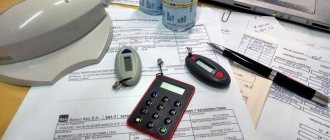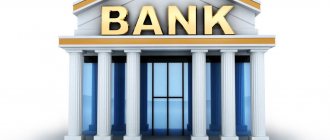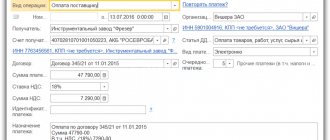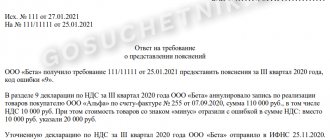What are bank assets?
Assets are everything where the bank invests its existing funds
. That is, these are loans, securities, and other property in which a credit institution invests borrowed and own funds. The bank's assets can be:
- money;
- loans;
- investments;
- accounts in other banks;
- securities;
- property;
- authorized capitals of different companies.
The bank places its funds in assets to generate income
. It is obtained through depositors' funds, interbank loans, bond issues, and equity.
The bank's assets are growing
, since the organization constantly carries out some operations: issues loans, invests, and conducts other operations related to attracting and placing raised funds.
If there are fewer assets
, this indicates a deterioration in the condition of the credit institution. Anyone looking for a suitable bank to make a deposit must check the liquidity of the credit institution.
Credit institutions constantly report to the Central Bank of the Russian Federation about the status of assets and liabilities. After analyzing this data, the potential client determines the general financial situation in different banks, and can decide which one is worth making a deposit with.
Based on data on the dynamics of assets, capital and liabilities over the course of a year or other long period of time, it is determined how effectively the bank operates in the market
.
Bank assets
A bank's assets are all its property. This is cash - money held in bank accounts.
The word “cash” in bankers’ jargon does not mean only banknotes and coins; it also means non-cash transactions.
An asset also includes loans issued by the bank and related property rights.
These rights are assessed and reflected in the bank’s balance sheet, but cases are different - the loan may not be returned, the collateral may “sour”, and force majeure is not that uncommon.
Therefore, issued loans are an ongoing headache for bankers, a risky asset, and a powerful means of reducing life expectancy.
Bank assets also include real estate, vehicles, indoor property, weapons, special equipment, etc., listed on the balance sheet.
Assets also include bank investments - as a rule, securities on the balance sheet from participation in the capital of commercial structures.
The law limits the share of a bank's capital that can be invested in business, and yet such activity is the main purpose of a bank in a healthy economy.
But when there are too many banks in the country, many of them cannot cope with the competition and begin to play on the brink of a foul.
Such “rogues” have nothing to invest, and they happily slide into bankruptcy.
The modern economy has absorbed the quasi-capitalist model imposed on us, and banks, in fact, have ceased to be centers of financing the national economy.
Loans - yes, yes, yes, but at such an interest rate that will cut off even timid hopes for economic stability.
Therefore, people turn to the bank out of necessity, as if they were a well-known institution with two big zeros...
What are bank liabilities?
These are the bank's own and borrowed funds, as well as reserves for possible losses. The size of assets and liabilities (including equity capital) must be the same.
Liabilities include:
- customer funds in accounts, deposits;
- loans;
- profit for previous periods;
- issued securities;
- authorized capital;
- emission;
- reserve funds.
Deposits are also included in obligations to depositors
, therefore, is a component of the passive. Due to deposits, new assets of the organization are formed. This happens due to the turnover of depositors' funds. That is, the client places a deposit in the bank, and the bank uses this money at its own discretion (albeit under strict control by the Central Bank).
Assets are property that has a monetary value, and liabilities are the sources of origin of this property.
For a credit institution to successfully operate, develop and increase capital, the ratio of liabilities, capital and assets is important.
Finished products in warehouse asset or liability
AssetsMagnitude. thousand roubles. Fixed assets1. Fixed assets including: 1201.1. Buildings: 120 Buildings of production workshops (8) 120420 Buildings of material warehouses of finished products (9) 120350 Building of the administrative building (10) 1202901.2. Machinery and equipment: 120 Machine tools with numerical control in the warehouse of finished products (2 )120200Production equipment in assembly shops (3)1208502.Intangible assets110Business reputation of the organization (25)1105Organizational expenses and the account of the founders’ contribution to the authorized capital (26)11015Rights to industrial designs (27)11024.Long-term investments in securities of enterprises (14)140250Total first section2360Current assets1. Inventory: 2111.1. Basic materials: Round steel in stock (4) 211340 Components in stock (6) 211820 Non-ferrous metals in stock (7) 211301.2. Other materials: Other materials in stock (5) 21170 Writing paper (11) 21140 Powder for fax (21) 21152. Work in progress (1) 213960 Semi-finished products of own production (12) 213603. Deferred expenses (20) 21684. Finished products (15) 2148005. Cash: 260 Cash in the cash register of the enterprise (28) 26110 Current account (29) 262380 Currency account (35) 260306. Short-term investments in securities of enterprises (13) 25025 Short-term loans provided to other enterprises (16) 250557. Funds in settlements: Advances to suppliers for materials (17) 230120 Total for the second section 3775Balance6135PassiveCapital and reserves1. Authorized capital (30) 41035002. Additional capital (31) 420903. Reserve capital (32) 4301604. Profit: 4.1. Profit of the reporting year (33) 4701705. Targeted financing (34) 450140 Total for the third section 4060long term duties1. Long-term loans (24) 510930 Total for the fourth section 930Short-term liabilities1. Short-term loans (23) 6101602. Accounts payable: 620 Accounts payable for electricity (22) 6215 Debt of enterprises to suppliers of materials (18) 621180 Advances received from buyers (19) 621170 Debt to employees of the enterprise for wages (36) 622210 Debt to the budget for income tax from individuals (37) 624130 Debt of the enterprise and social insurance authorities (38) 623290 Total for the fifth section 1145Balance6135TASK 2. ACCOUNTS AND DOUBLE ENTRY. REFLECTION OF BUSINESS OPERATIONS ON ACCOUNTS
Purpose of the task
: mastering the procedure for reflecting business transactions in accounting accounts.
Exercise:
Based on data to complete the task: open accounting accounts; reflect business transactions in the accounting accounts using the double entry method; calculate turnover and final balances; draw up a balance sheet based on the final balances.
Data for completing the task Balance sheet of the plant December 1, 200_
| Assets | Amount, thousand rubles | Passive | Amount, thousand rubles |
| 2500 | Authorized capital | 3000 | |
| PROFIT 99 | 2400 | ||
| buildings, machines, equipment | 2500 | Short-term loans | 2000 |
| Stocks including: | Accounts payable including: | ||
| raw materials | 1800 | before the budget | 440 |
| unfinished production | 900 | on insurance | 500 |
| finished products | 400 | on wages | 1015 |
| 2815 | other creditors | 60 | |
| cash register | 15 | ||
| current accounts | 2800 | ||
| Accounts receivable including: | 1000 | ||
| buyers | 750 | ||
| other debtors | 250 | ||
| BALANCE | 9415 | BALANCE | 9415 |
Business transactions for December (postings)
14 Debt repaid: - to the budget
-social insurance authorities
19 Transferred from the current account to pay off the debt:
| 1 Wages accrued to workers for manufacturing products | D20 K70 | 712 |
| 2 Withheld taxes from employee salaries | D70 K68 | 22 |
| 3 Social insurance contributions have been made | D20 K69 | 205 |
| 4 Money was received at the cash desk from the current account to pay wages to employees of the enterprise | D50 K51 | 690 |
| 5 Issued from the cash register for reporting on business expenses | D71 K50 | 12 |
| 6 Wages to employees of the enterprise were issued from the cash register | D70 K50 | 620 |
| 7 Materials arrived at the warehouse from suppliers | D10 K60 | 250 |
| 8 A short-term loan for raw materials was credited to the current account | D51 K66 | 230 |
| 9 Deposited salary was deposited into the bank account | D51 K50 | 70 |
| 10 Deposited unclaimed on time earned by paying | D70 K76.4 | 70 |
| 11 Materials released from warehouse to production | D20 K10 | 320 |
| 12 The machine was transferred free of charge to another enterprise | D91.2 K01 | 350 |
| 13 Materials unused in production were returned from the workshops | D10 K20 | 40 |
| 15 Finished products released from production | D43 K20 | 1200 |
| 16 The cost of finished products (released from production plus the balance of finished products) was written off as expenses | D90.2 K43 | 1600 |
| 17 Finished products were shipped to customers | D62 K90.1 | 250 |
| 18 The bank loan for goods shipped was credited to the current account | D51 K66 | 200 |
| 20 Determination of financial results from sales | D99 K90 | 1350 |
| 21 Determination of financial results from other operations | D99 K91.2 | 350 |
| 22 Determination of profit (loss) for the reporting year | D99 K84 | 700 |
| 10-Materials | |
| D | TO |
| CH=1800 | |
| 11)320 | |
| Vol.=290 | Vol.=320 |
| Sk=1770 | |
Solution
: We will open accounting accounts and post business transactions:
| 01-Fixed assets | |
| D | TO |
| CH=2500 | |
| 0 | 12)350 |
| Vol.=0 | Vol.=350 |
| Sk=2150 | |
| 20-Main production | |
| D | TO |
| CH=900 | |
| Vol.=1237 | Vol.=1240 |
| Sk= 897 | |
| 43-Finished products | |
| D | TO |
| CH=400 | |
| 15)1200 | 16)1600 |
| Vol.=1200 | Vol.=1600 |
| Sk= 0 | |
| 50-Cashier | |
| D | TO |
| CH=15 | |
| Vol.=690 | Vol.=702 |
| Sk=3 | |
| 51-Current account | |
| D | TO |
| CH=2800 | |
| Vol.=500 | Vol.=2220 |
| Sk=1080 | |
| 60-Settlements with suppliers | |
| D | TO |
| CH=0 | |
| 19.2)250 | 7)250 |
| Vol.=250 | Vol.=250 |
| Sk=0 | |
| 66-Settlements with short-term creditors | |
| D | TO |
| CH=2000 | |
| 19.1)230 | |
| Vol.=230 | Vol.=430 |
| Sk=2200 | |
| 68-Calculations for taxes and fees | |
| D | TO |
| CH=440 | |
| 14)400 | |
| Vol.=400 | Vol.=22 |
| Sk=62 | |
| 69-Calculations for social insurance. | |
| D | TO |
| CH=500 | |
| Vol.=650 | Vol.=205 |
| Sk=55 | |
| 70-Settlements with personnel for payment of tr. | |
| D | TO |
| CH=1015 | |
| Vol.=712 | Vol.=712 |
| Sk=1015 | |
| 71-Settlements with accountable persons | |
| D | TO |
| CH=0 | |
| 0 | |
| Vol.=12 | Vol.=0 |
| Sk=12 | |
| 76.1-Settlements with different debtors | |
| D | TO |
| CH=250 | |
| 0 | |
| Vol.=0 | Vol.=0 |
| Sk=250 | |
| 76.2-Settlements with different creditors | |
| D | TO |
| CH=60 | |
| 0 | |
| Vol.=0 | Vol.=0 |
| Sk=60 | |
| 76.4-Settlements on deposited amounts | |
| D | TO |
| CH=0 | |
| 0 | |
| Vol.=0 | Vol.=0 |
| Sk=70 | |
| 90-Sales | |
| D | TO |
| 16)1600 | |
| Vol.=1600 | Vol.=1600 |
| 99-Profits and losses | |
| D | TO |
| CH=2400 | |
| Rev.=2400 | Rev.=2400 |
| Sk=0 | |
| 91-Other income and expenses | |
| D | TO |
| 12)350 | 21)350 |
| Vol.=350 | Vol.=350 |
| 84-Retained earnings | |
| D | TO |
| CH=0 | |
| 0 | |
| Vol.=0 | Vol.=700 |
| Sk=700 | |
Let's draw up a balance sheet:
| Account number | Name | Balance at the beginning of the period | Period transactions | balance at the end of period | ||||
| D | TO | D | TO | D | TO | |||
| 01 | Fixed assets | 2500 | 0 | 350 | 2150 | |||
| 10 | Materials | 1800 | 290 | 320 | 1770 | |||
| 20 | Primary production | 900 | 1237 | 1240 | 897 | |||
| 43 | Finished products | 400 | 1200 | 1600 | 0 | |||
| 50 | Cash register | 15 | 690 | 702 | 3 | |||
| 51 | Checking account | 2800 | 500 | 2220 | 1080 | |||
| 60 | Settlements with suppliers and contractors | 0 | 250 | 250 | 0 | |||
| 62 | Settlements with buyers and customers | 750 | 250 | 0 | 1000 | |||
| 66 | Calculations for short-term loans and credits | 2000 | 230 | 430 | 2200 | |||
| 68 | Calculations for taxes and fees | 440 | 400 | 22 | 62 | |||
| 69 | Social insurance calculations | 500 | 650 | 205 | 55 | |||
| 70 | Payments to personnel regarding wages | 1015 | 712 | 712 | 1015 | |||
| 71 | Calculations with accountable persons | 0 | 12 | 0 | 12 | |||
| 76 | Settlements with different debtors | 250 | 0 | 0 | 250 | |||
| 76 | Settlements with various creditors | 60 | 0 | 0 | 60 | |||
| 76 | Calculations on deposited amounts | 0 | 0 | 70 | 70 | |||
| 80 | Authorized capital | 3000 | 0 | 0 | 3000 | |||
| 84 | retained earnings | 0 | 0 | 700 | 700 | |||
| 90 | Sales | 0 | 1600 | 1600 | 0 | |||
| 91 | other expenses | 0 | 350 | 350 | 0 | |||
| 99 | Profit and loss | 2400 | 2400 | 0 | 0 | |||
| Total | 9415 | 9415 | 10771 | 10771 | 7162 | 7162 | ||
Let's draw up an annual balance sheet:
Prepare the balance sheet as of December 31 in the following form:
| Assets | Amount, thousand rubles | Passive | Amount, thousand rubles |
| 2150 | Authorized capital | 3000 | |
| Profit of the reporting period | 700 | ||
| 2150 | Short-term loans | 2200 | |
| Stocks including: | 2667 | Accounts payable including: | 1262 |
| - raw materials | 1770 | -before the budget | 62 |
| -primary production | 897 | -on insurance | 55 |
| -finished products | 0 | - on wages | 1015 |
| 1083 | - other creditors | 130 | |
| -cash register | 3 | ||
| - current accounts | 1080 | ||
| Accounts receivable including: | 1622 | ||
| -buyers | 1000 | ||
| - other debtors | 250 | ||
| -accountable persons | 12 | ||
| BALANCE | 7162 | BALANCE | 7162 |
Accounting system and double entry. The relationship between synthetic and analytical accounting
Purpose of the task: checking the assimilation of the material covered.
Task: based on data to complete the task:
open accounts for synthetic and analytical accounting;
reflect business transactions on them;
calculate turnover and final balances;
determine the correctness of recording transactions and calculating results by compiling turnover sheets for synthetic and analytical accounts;
compare the results of analytical statements with the corresponding data of the turnover sheet for synthetic accounting accounts;
Data to complete the task:
2.Business transactions for December
What is the bank's liquidity level?
This is the ability of a credit institution to ensure the fulfillment of obligations on time. Liquidity level is the ratio of available assets to obligations that need to be fulfilled.
Insufficient liquidity
may lead to bank insolvency and significantly affect profitability.
When there is panic in the market and clients run to withdraw their funds from their accounts, the bank has only two types of sources of liquidity:
- Internal – own funds in accounts, at the cash desk.
- External – quickly raise funds if necessary.
With positive liquidity indicators, the parameter means that the bank can fulfill all its financial obligations. If the level of liquidity decreases, the bank has financial problems. When it reaches a critical point of no return, the credit institution may be deprived of its license.
The Central Bank determines the level of liquidity according to three standards:
- Current. Limits the risk of a credit institution losing its solvency in the next 30 days. The minimum value established by the Central Bank is 50%.
- Long term. Limits the risk of insolvency resulting from the placement of funds in long-term assets. The minimum value is 120%.
- Instantaneous. Limits the risk of loss of solvency within one calendar day. The minimum value is 15%.
When one of the regulations is violated, the Central Bank imposes a ban on banking operations, imposes fines on the bank, or even revokes its license.
To prevent it from going to extreme measures, you should not allow there to be more liabilities than assets
.
Bank asset structure
The formation of bank assets occurs as a result of the placement of funds in order to make a profit. Such operations are called active.
Composition of assets of banking organizations:
- money in correspondent accounts;
- cash at the bank;
- required reserves;
- currency;
- loans issued;
- Central Bank;
- shares in the management capital of other organizations;
- precious metals and stones;
- real estate;
- other.
To analyze the structure, this list can be ranked according to several criteria:
- By liquidity (speed of conversion into money) - highly liquid (cash in hand, balances in correspondent accounts); medium-liquid (corporate securities, shares in management companies); low-liquidity (real estate, land).
- By profitability (the ability to generate profit) - those that provide income (investments, loans issued); not providing income (tangible assets).
- In terms of reliability (the degree of risk of losing an asset) – risk-free (funds in correspondent accounts with the Central Bank of the Russian Federation); low-risk (loans secured by precious metals, government securities); medium risk; high-risk (loans to customers, including overdue ones).
Reliability and rate of return, as a rule, are inversely related: the higher the expected return, the more risky the investment. Therefore, the main task of bank management is to maintain a balance of profitability, liquidity and risk. On the one hand, it is necessary to strive to obtain maximum profit, and on the other hand, not to expose the funds of depositors and investors to excessive risk. In addition, the bank must be able to pay off its obligations at any time.
Assets of Russian and foreign banks – who leads the market?
To clearly see the difference, we will display the real situation in the TOP-5 banks of the Russian Federation by the number of assets
during the period from July 1 to August 1, 2021.
| Banks | Assets 07/01/2020 in thousand rubles. | Assets 08/01/2020 in thousand rubles. | Change in thousand rubles | Change in % | |
| 1 | Sberbank | 31 179 957 970 | 31 705 048 988 | +525 091 018 | +1,68% |
| 2 | VTB | 15 322 987 010 | 15 892 668 291 | +569 681 281 | +3,72% |
| 3 | Gazprombank | 6 789 066 670 | 7 216 582 674 | +427 516 004 | +6,30% |
| 4 | Alfa Bank | 3 836 699 423 | 3 940 394 266 | +103 694 843 | +2,70% |
| 5 | Rosselkhozbank | 3 624 377 260 | 3 674 494 265 | +50 117 005 | +1,38% |
Based on the data in the table, it is obvious that the leading position in terms of the number of assets is occupied by Sberbank
. In July, this amount was 31,179,957,970 thousand rubles, in August 31,705,048,988 thousand rubles, which is as much as +525,091,018 thousand rubles. And although in percentage terms this is only +1.68%, when compared with other banks, the amount is significantly higher.
For example, let's take Rosselkhozbank
, which occupies 5th position in the ranking. At the beginning of July 2020, the structure contained 3,624,377,260 thousand rubles of assets, in August 3,674,494,265 thousand rubles. The difference in amounts amounted to 50,117,005 thousand rubles or +1.38%. In percentage terms, this is slightly lower than in Sberbank, but in terms of amounts, it is obvious that Rosselkhozbank is not as in demand as Sberbank.
What about assets in other countries?
To compare the situation in the Russian Federation with global indicators, we present a table of the top 5 largest banks in the world by consolidated assets. These are the resources of a group of interconnected organizations that are considered as a single economic entity.
| Position in the world ranking | Bank | Assets in billions of US dollars |
| 1 | Royal Bank of Scotland | 3 268 |
| 2 | Bank of Germany – Deutsche Bank | 2 954 |
| 3 | French financial conglomerate – BNP Paribas | 2 675 |
| 4 | One of the largest financial conglomerates in the UK - Barclays | 2 443 |
| 5 | French financial conglomerate – Crédit Agricole | 2 068 |
Based on the table data, it is obvious that the most popular in terms of deposits and reliability are French and English groups of companies
. These are huge financial groups represented in different countries of the world, and to whom the richest people in the world trust their money.
Assets and liabilities of the balance sheet
That is, when an asset increases by a certain amount, it is necessary to increase the liability by the same amount. This principle of increasing amounts also applies to liabilities. Let's look at it in more detail using an example.
Example 1. Let's say an enterprise purchased a fixed asset worth 500,000 rubles.
for the production of semi-finished products.
Fixed assets are reflected in the asset, that is, the amount of the enterprise’s asset increased by 500,000 rubles. The other side is that you need to pay the supplier 500,000 rubles for the fixed asset. The debt to the supplier is reflected in the liability, that is, the company's liability also increased by 500,000 rubles. Therefore, the main condition is met: Active = Passive Example 2.
Let’s say an enterprise has issued a loan from a bank in the amount of 750,000 rubles.
The enterprise's debt to the bank is reflected in the liability, that is, the enterprise's liability increased by 750,000 rubles.
The other side is that after transferring the received loan, the amount in the current account increased by 750,000 rubles.
What do you need to know when choosing a bank to make a deposit?
You need to focus not only on the current state of the organization’s assets. It is important to trace the dynamics of the bank in terms of the state of its property throughout the year and different periods of time. The more stable the dynamics and indicators, the more reliable the financial institution
. This means that he is not afraid to entrust his savings and he will be able to increase them over time.
Minor changes up or down are normal.
If there was a one-time reduction in assets in the dynamics, this does not indicate financial problems, this is allowed. But when did this situation become a pattern?
– it’s better to look and choose another bank.
Current liabilities include
How are they interconnected and how do they differ from each other? Why is an asset equal to a liability? How to understand what a particular property or liability is?
These are the resources of an organization that it uses in the process of economic activity, the use of which in the future implies profit.
Assets always display the value of all tangible, intangible and monetary assets of the company, as well as property powers, their content, placement and investment. Examples of business assets:
- Finished products.
- Securities;
- Fixed assets;
- Goods;
- Raw materials, materials, semi-finished products;
All this is property that the enterprise will use in the course of its operation in order to generate economic profit.
- Material refers to objects that are in material form (they can be touched and felt).









